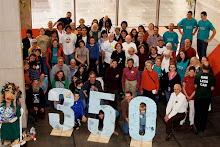Aquaponics is a system that creates a symbiotic relationship between plants and fish. The plants depend on the fish to make the water high in nitrogen and other nutrients and the fish rely on the plants to keep the water clean. Aquaponics is a fun and simple way to incorporate education and nutritional foods into your everyday life.

Why should I incorporate Aquaponics into my life?
• Healthy foods grown at your home
• Fun
• Educational
• Sustainable (we have harvested 90% of marine life in recent history)
• Standard fish farms can rear unhealthy fish in an unsanitary environment
(Larger aquaponic systems can raise fish for consumption)
• Inexpensive
• Fresh foods available 24/7
• Easy
• Have a garden with no lawn
• Can grow food in the city

How do I build my Aquaponics system?
To get started you will need:
• A 30 gallon tote ( or size of your choosing)
• A submersible pump
• Drip tubing and top feed system
• Water
• Fish
• Pots (or plastic cups)
• Seeds of your choosing
1. Cut holes in the lid of the tote to hold the potters
2. Fill the tote with water
3. Connect the pump to the drip system
4. Add fish
5. Fill potters with vermiculite and perlite at a 1:1 ratio, and place potters in the lid
6. Transplant leafy vegetables and herbs into your potters
7. Place the drippers in each pot, and turn the pump on.
You now have a fully functional Aquaponics system! Enjoy the delicious outcome.




